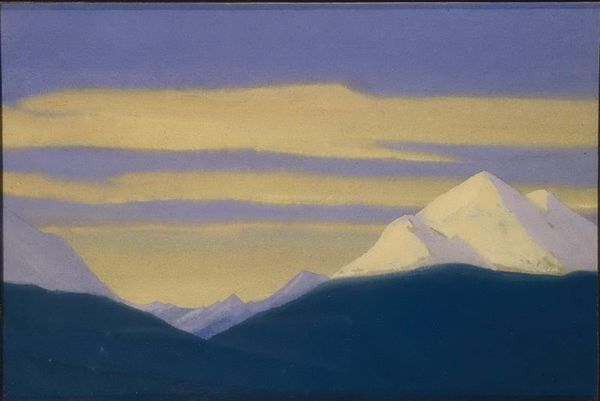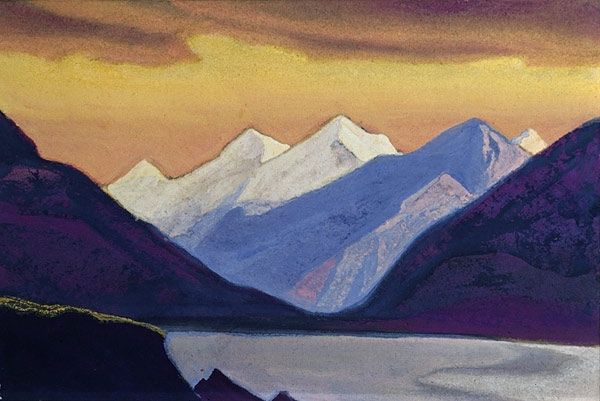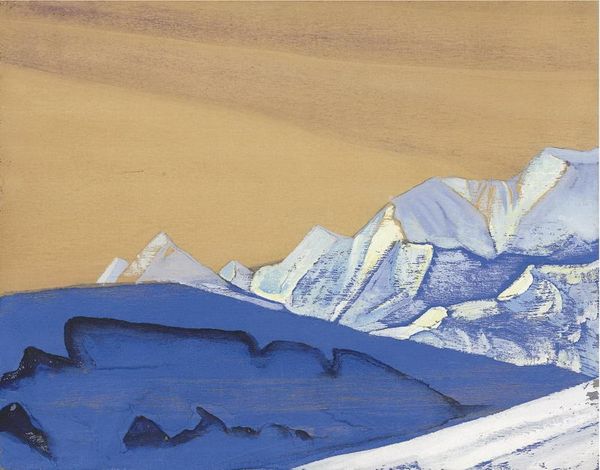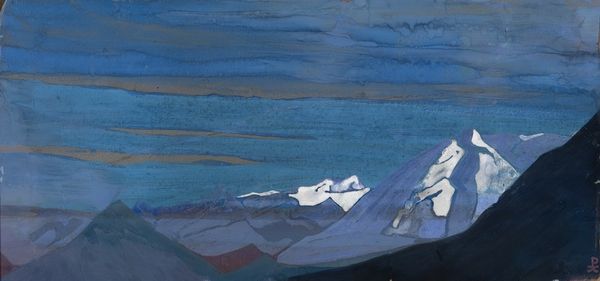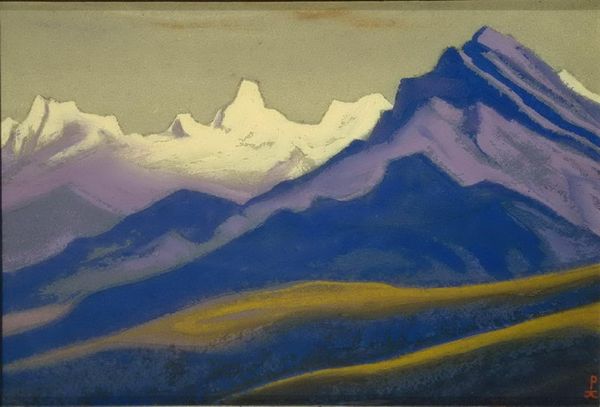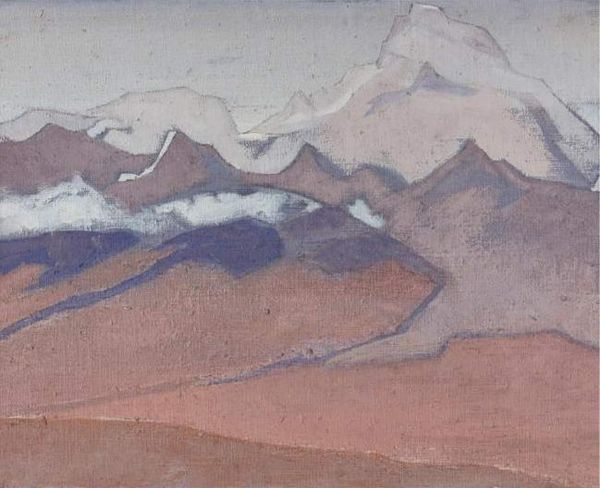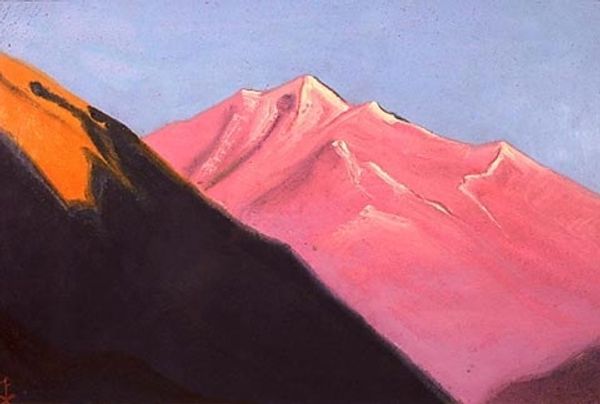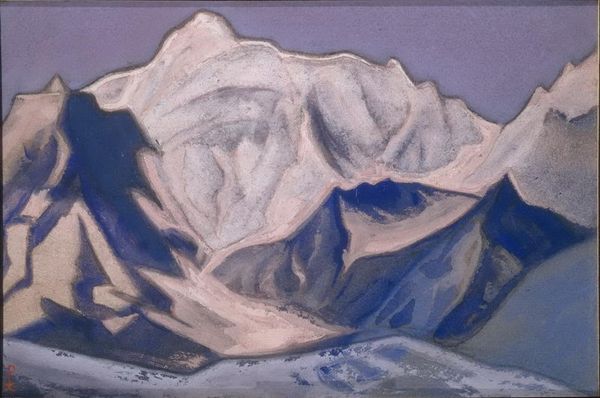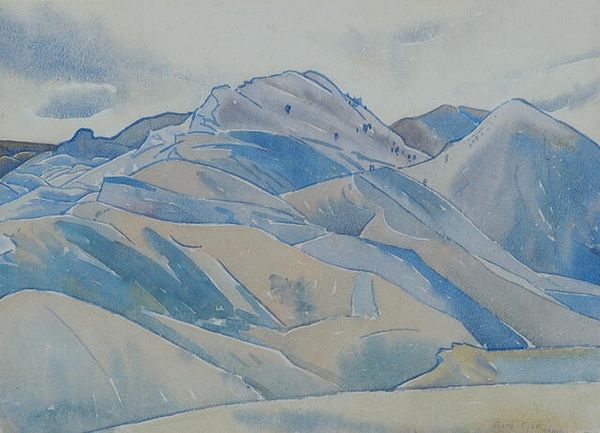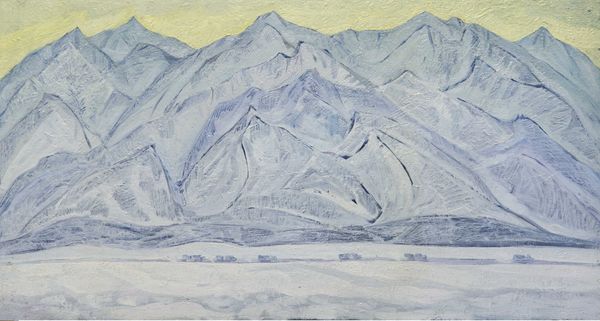
Copyright: Public domain
Editor: This is Nicholas Roerich's "Lake in the Mountains. Baralacha Pass" from 1944, created using oil paints. It's remarkably serene, almost dreamlike, with those soft pastel colors and sharp mountain geometry. What do you see in this piece that speaks to a deeper cultural or symbolic language? Curator: Well, first notice how Roerich simplifies the mountains into almost geometric forms. They aren't just mountains; they are symbols of spiritual aspiration, the journey towards enlightenment found in many Eastern philosophies. The lake becomes a mirror, reflecting that spiritual journey inward. Editor: So, it's not just a pretty landscape painting, but more about...reflection? Curator: Exactly. Consider the date, 1944. While the world was at war, Roerich was painting these serene, almost otherworldly scenes. He was perhaps pointing to the enduring power of the spiritual, a visual reminder of inner peace amid global turmoil. Do you see how the cool blues and whites dominate? Editor: Yes, there's a stillness to the cool tones. Does that stillness relate to the symbolism? Curator: Indeed. The coolness evokes purity and transcendence. These mountains are often seen as sacred spaces in many cultures, places where humans can connect with the divine. Roerich understood how color and form resonate deeply within our collective unconscious, across cultures and time. What feelings does the artwork instill in you? Editor: I think it evokes a sense of peace, almost like a quiet strength. It’s interesting to learn that the imagery has deeper cultural roots than I initially thought. Curator: It invites us to seek our own inner "lake," where we might reflect and find that strength too. Understanding the symbolism unlocks another layer of emotional connection to this work.
Comments
No comments
Be the first to comment and join the conversation on the ultimate creative platform.
